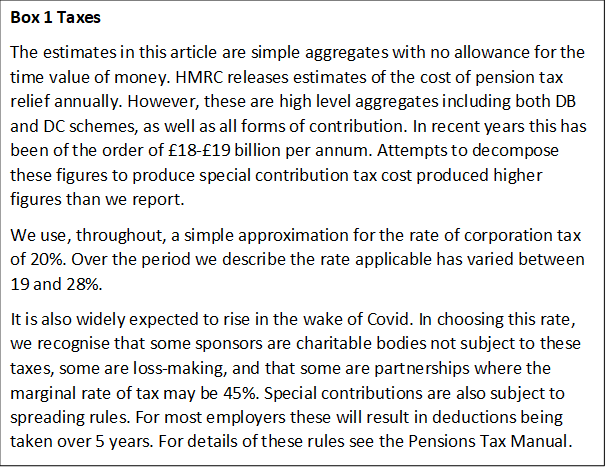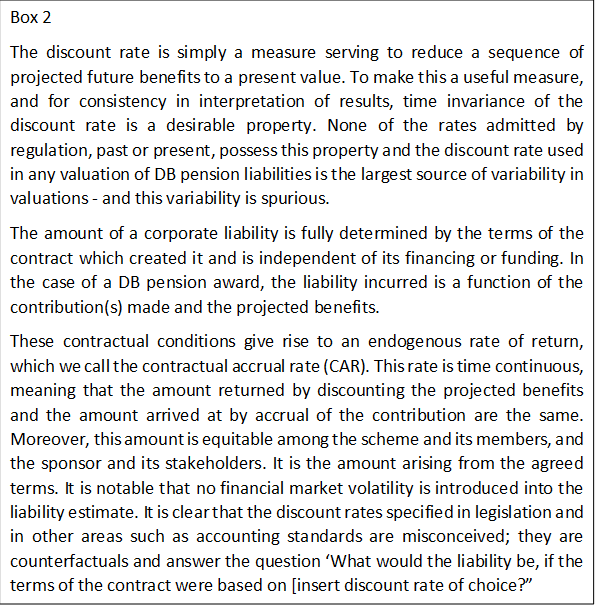A New Hope - Defined Benefit Pensions
Friday, 17 July 2020By Con Keating & Iain Clacher

Amazon commenced trading in 1995. It has proved a remarkable success; its market capitalisation is now around $1.5 trillion. That year also marked the debut of the modern era of Defined Benefit (DB) pensions regulation with the Pensions Act 1995 (PA95) as its keystone; it was informed by the earlier Goode Review at a time when DB arrangements were the dominant form of occupational pension, and taxation of surpluses was an issue. Unlike the performance of Amazon, the success of DB pensions regulation in the UK is highly questionable looking back at the consequences of the past 25 years.
The years since have seen a welter of further regulation motivated by the shortcomings of the last piece of regulation; a trend that had continued unabated. These successive pieces of regulation have proved inordinately costly to corporate sponsors. In the period since 2009, for which consistent statistics are available[i], some £160 billion in special contributions alone have been paid into deficit recovery, with no discernible impacts on deficits or member security. Taxpayers have borne about £30 billion of this cost (see Box 1) and occupational DB provision is now marginal.

The over-arching and all-consuming concern of government has been the security of member pensions. The cost of the regulation to “protect” members has resulted in the closure of DB schemes to new members and future accrual on a grand scale. The principal concerns that drove this regulatory tsunami were abandonment of the scheme by an employer and sponsor insolvency.
Of course, the presentation of this regulation as enhancement to pensioner security could be relied upon to find parliamentary support - pensioners vote. Scheme abandonment was precluded, effectively, by the 2003 debt on employer legislation and the valuation (in wind-up) of liabilities for solvent employers was raised to the level of buy-out.
Section 75 of PA1995, which deals with deficiencies on winding-up is a particularly good indicator of how legislation has moved the goal posts over time. In its original form, it is innocuous. It precludes pension debts from having priority over other general unsecured creditors and requires liability values to be calculated in the prescribed manner, and that prescription was contained in the associated minimum funding legislation, and the Actuarial Guidance Notes 19 and 27. These notes specify the selection of discount rates and include different rates for pensioner liabilities to those for other members. We have previously criticised prescribed methods extensively in a range of commentaries and publications, and describe in Box 2 the correct discount rate for the estimation of the present value of DB liabilities.

The Pensions Act 2004 (PA04)

Since the introduction of PA04, its subsequent scheme funding regulations, provided a new regulatory architecture, creating a new Pensions Regulator and the Pension Protection Fund (PPF). Under this regime, Section 75 liabilities became full buy-out for both solvent and insolvent companies at wind-up, and with that, any pretence of equitable treatment of the other creditors of an insolvent firm was no more.
The scheme funding requirement is based on "technical provisions”, which are upwardly biased estimates of liabilities, and are erroneously heavily dependent upon market yields and asset prices. The result is that as interest rates have fallen, liability valuations, but not pensions themselves, have exploded, and schemes have progressively followed defensive asset allocation strategies. More importantly, in the context of the retirement outcomes of future generations, schemes closed to new members and future accrual in droves, replacing some level of security in retirement with what was at the time lacklustre DC.
Throughout this period, the Regulator’s emphasis has been one of ever more funding, motivated in part by its statutory requirement to protect the PPF. The missing objective[ii] for the Pensions Regulator is the absence of any requirement to promote the ongoing provision of high-quality affordable occupational pensions (and this did not have to be DB).
In looking at the history of how we arrived here, we could be criticised as having a rear-view mirror to pick holes in what was well meaning regulation. And who could have predicted the outrageous largesse of central banks to encourage moral hazard, maintain property prices, and keep zombie companies afloat. However, the game of discount rates was clearly identified in the Myners Review in 2001 in relation to the Minimum Funding Requirement:
“For that reason, it does not agree with proposals for a standardised test, even if it were only applied to some portion of the benefits. This would still create artificial incentives to match the assets used to generate the discount rate for the liabilities.”[iii]
In looking at The Regulator’s proposed new DB Funding Code, we now have foresight from before the 2004 Act that identified the gaming of incorrect discount rates; we have the hindsight of the past 15 years or so and the significant economic consequences of not understanding discount rate game; and today we have foresight as to what will most definitely come under the new Code.
Simply put, the new Funding Code is all concerned with management of the ’end-game’; a world where DB is dead in all but a few places. Self-sufficiency, the elimination of dependency upon the sponsor employer, is the new objective. It will require further funding on a massive scale. The PPF currently reports a total deficit[iv] (for schemes in deficit) to the Section 179 value of £290 billion, and that is likely an under-estimate of complete self-sufficiency. Further funding on this scale would be an economic and fiscal disaster. Perhaps, the least of this would be the loss of £60 billion in corporate tax revenues.
A New Hope

However, there is now hope that the worm has finally turned. Baroness Bowles of Berkhamsted introduced an amendment, which was adopted, to the current pensions Bill, which would require:
(a) schemes that are expected to remain open to new members, either indefinitely or for a significant period of time, are treated differently from schemes that are not;
(b) scheme liquidity is balanced with scheme maturity;
(c) there is a correlation between appropriate investment risk and scheme maturity;
(d) affordability of contributions to employers is maintained;
(e) affordability of contributions to members is maintained;
(f) the closure of schemes that are expected to remain open to new members, either indefinitely or for a significant period of time, is not accelerated; and
(g) trustees retain sufficient discretion to be able to comply with their duty to act in the best interests of their beneficiaries.
Hope springs eternal.
Notes
[i] The Pensions Act 2014 did introduce a requirement for the Regulator to minimise, for funding purposes, any adverse impact on the sustainable growth of the employer. It has had little obvious effect.
[ii] See, Paragraph 67, Page 12, of Institutional Investment in the United Kingdom: A Review, 2001.
[iii] Analysis by the Regulator of the latest tranche of valuations suggests that had they all been conducted as at the end of period, March, date, sharp rises in deficit repair contributions would have been warranted,
[iv] The Pensions Regulator has compiled deficit repair contribution aggregates only since 2009. The ONS reports a closely related statistic, total special contributions. They are closely related. The principal difference would arise from sponsor contributions to scheme annuitisation in buy-out or buy-in transactions. From the ONS figures, it appears that deficit repair contributions from 2004 to 2009 may have totalled some £40 billion.